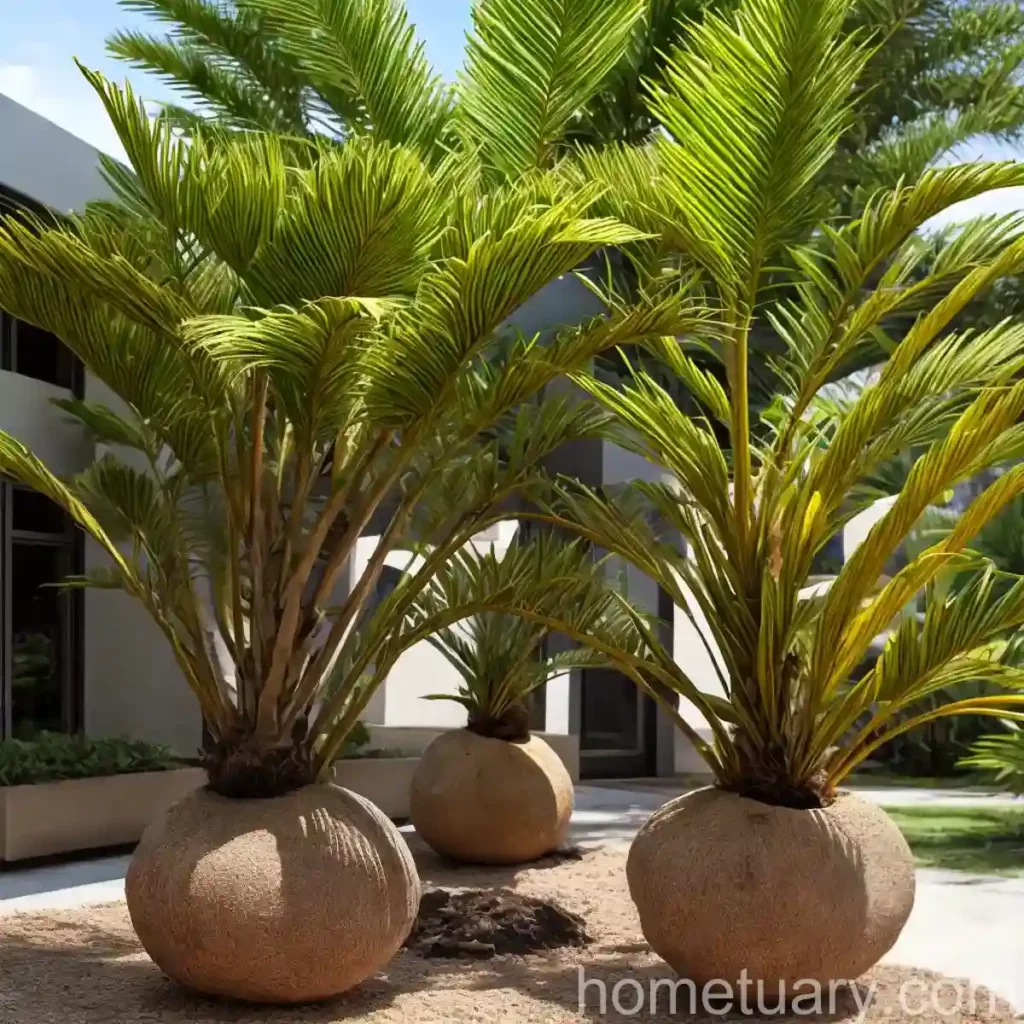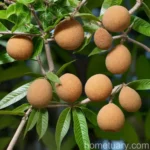All About Cycad (Dioon edule)
Introduction
In the realm of botanical wonders, the cycad plant cultivars stand out as a group of fascinating and ancient plants. Among these, one species, in particular, holds a special place – the Dioon edule. This article serves as a comprehensive guide to understanding the plant’s nature, cultivation, and uses. From its history to its current role in horticulture, we will delve into every aspect related to this remarkable plant species.
What is a Cycad (Dioon edule)?
The Dioon edule, commonly known as the cycad, is a member of the cycad genus and belongs to the family Zamiaceae. These plants are gymnosperms, which means they reproduce via seeds and do not bear fruits or flowers. The Dioon edule species is native to Mexico, where it flourishes in specific regions with its unique set of growing conditions.

Botanical Overview
Here are some key characteristics of the Dioon edule:
– Genus: Cycad
– Species: Dioon edule
– Common Name: Virgin’s Palm
– Type: Gymnosperm
– Family: Zamiaceae
– Origin: Mexico
– Foliage: Evergreen
– Growth Rate: Slow
Key Takeaways – Cycad (Dioon edule)
Before delving into the detailed aspects of cultivation and uses, let’s take a quick look at the key takeaways regarding the Dioon edule:
- Dioon edule is a species of cycad, a group of gymnosperm plants.
- It is native to Mexico and is known for its evergreen foliage.
- The plant has a slow growth rate and is often referred to as the Virgin’s Palm.
- Cultivating and maintaining the Dioon edule requires specific care related to water, sunlight, soil, and pruning.
Now, let’s dive into the specific aspects of cultivating and caring for the cycad (Dioon edule) plant.
Culture
Uses
The Dioon edule has been valued for various purposes, both traditional and contemporary. Some primary uses of the plant include:
- Ornamental Purposes: The striking form and foliage of the cycad make it a popular choice for ornamental or landscaping purposes.
- Traditional Medicine: In some regions, the plant has historical significance and is used in traditional medicine for certain ailments.
- Botanical Research: Cycads, including the Dioon edule, are of interest to botanists and researchers due to their ancient origins and unique botanical features.
Water
Providing the appropriate amount of water is crucial for the optimal growth of the Dioon edule. The plant requires well-drained soil and is susceptible to root rot if overwatered. Here are some tips for watering the cycad:
– Regular Watering: During the growing season, ensure the soil is consistently moist but not waterlogged.
– Reduced Watering in Winter: In winter, reduce the frequency of watering to prevent water stagnation.
Sunlight
Proper sunlight exposure plays a vital role in the health and growth of the Dioon edule. Here’s a guide to best practices related to sunlight:
– Partial Shade: The plant thrives in partial shade, making it suitable for partially shaded garden spots.
– Protection from Harsh Sun: Shield the plant from direct, intense sunlight, especially during the hottest part of the day.
Fertilizer
Feeding the cycad with appropriate nutrients supports robust growth and foliage health. Follow these fertilizer guidelines for optimal results:
– Balanced Fertilizer: Use a balanced fertilizer with a higher nitrogen content to support the plant’s growth.
– Application Frequency: Apply fertilizer during the growing season, typically in spring and summer.
Soil
The soil composition greatly impacts the overall health and growth of the Dioon edule. Consider the following soil-related practices:
– Well-Drained Soil: Ensure that the soil has good drainage to prevent waterlogging.
– Slightly Acidic pH: Aim for a slightly acidic soil pH level, ideally between 5.5 and 6.5.
Pruning
Pruning is essential to maintain the cycad’s attractive appearance and remove any dead or damaged foliage. Here’s a brief overview of pruning the Dioon edule:
– Remove Dead Leaves: Regularly remove any dead or yellowing leaves to promote new growth and maintain the plant’s aesthetic appeal.
– Cautionary Note: Exercise caution while pruning as the plant’s foliage may be sharp and rough.
Propagation
The propagation of the Dioon edule can be achieved through various methods. Here’s a glance at the different propagation techniques used for the cycad:
– Seed Propagation: Growing the plant from seeds, though a slow process, is an option for propagating the Dioon edule.
– Offsets or Pups: Division of offsets or pups from an established plant is a common and effective method for propagation.
– Stem Cuttings: While less common, some growers use stem cuttings to propagate the Dioon edule.
Container Popularity
Dioon edule is also quite popular among container gardeners. The plant’s slow growth rate and ornamental appeal make it an ideal choice for container gardening. Furthermore, its adaptability to partially shaded environments adds to its allure as a container plant.
Container Tips
Here are some container-specific tips for cultivating the Dioon edule:
– Size of the Container: Choose a container that accommodates the plant’s root system comfortably and allows for adequate drainage.
– Potting Mix: Use a well-draining potting mix, and consider adding perlite or sand for improved drainage.
– Protection in Winter: Provide protection to the container plant during winter to shield it from frost and cold temperatures.
Common Diseases
While the Dioon edule is generally resistant to many pests and diseases, it is essential to be aware of potential issues to ensure the plant’s well-being. Some common diseases that may affect the cycad include:
– Cycad Aulacinum Scale (Aulacaspis yasumatsui): This scale insect is a notable pest that can cause damage to the plant’s leaves.
– Root Rot: Overwatering or poor soil drainage can lead to root rot, impacting the plant’s overall health.
Disease Diagnosis
Diagnosing potential diseases or issues with the Dioon edule requires close observation and prompt action. Look out for the following signs of diseases:
– Yellowing or Browning Foliage: Discoloration of the plant’s foliage may indicate stress or disease.
– Stunted Growth: If the plant shows signs of stunted growth or fails to produce new foliage, it may be suffering from an underlying issue.
Common Pests
The Dioon edule is relatively resistant to pests but may occasionally face infestations. Some common pests that may affect the cycad include:
– Scale Insects: Scale insects, such as the cycad aulacinum scale, can pose a threat to the plant’s health if left unchecked.
– Mealybugs: Mealybugs may target the Dioon edule, particularly in indoor or container environments.
Pest Control
Implementing proactive pest control measures can aid in preserving the health and vitality of the Dioon edule:
– Inspect Regularly: Routinely inspect the plant for signs of pests, especially on the undersides of leaves and along the stems.
– Natural Predators: Encourage natural predators of common pests, such as ladybugs, to help control populations in the garden.
Botanist’s Tips
For those keen on cultivating the Dioon edule or exploring its unique botanical features, here are some tips and insights from a botanist’s perspective:
– Ancient Origins: Cycads are ancient plants with a history spanning millions of years, making them intriguing subjects for botanical study.
– Ecological Significance: Due to their longevity and resilience, cycads play a significant role in various ecosystems and are of ecological importance.
– Conservation Efforts: Some cycad species, including the Dioon edule, are of conservation concern, emphasizing the need for protective measures and sustainable cultivation practices.
Fun Facts
To further appreciate the marvel of the cycad (Dioon edule), here are some fun facts about the plant:
– Living Fossils: Cycads are often referred to as “living fossils,” as they have remained relatively unchanged over millions of years.
– Female Cones: The Dioon edule produces large female cones, adding an intriguing visual element to the plant.
Links to External Resources
For additional resources and in-depth information on the cycad (Dioon edule), consider exploring the following links:
1. Cycad Plant Cultivars – Research Journal
2. Dioon edule Species – Botanical Society
3. Cycad Care Tips – Gardening Magazine
4. Dioon edule Cultivation Guide – Horticulture Institute
5. Cycad Genus Guide – Botanical Gardens Association
The links provided above offer valuable insights and expert guidance on various aspects related to the Dioon edule, ranging from cultivation to conservation.
In conclusion, the Dioon edule stands as a captivating example of ancient botanical marvels, with its unique characteristics and cultural significance. Whether admired for its ornamental beauty or studied for its ecological importance, the cycad continues to intrigue and inspire plant enthusiasts and researchers alike. By understanding and practicing the recommended care techniques, individuals can contribute to the preservation and appreciation of this exceptional plant species.
Plant enthusiasts and aspiring botanists alike can draw upon this comprehensive guide to deepen their knowledge and appreciation of the cycad (Dioon edule). From its historical and ecological significance to its cultivation and uses, the Dioon edule offers a rich tapestry of exploration and learning for those who seek to unravel its botanical wonders.
Remember to continuously explore and learn about the diverse plant species in the world around us, each with its own unique story and contributions to the natural world.
For more information on cultivating, understanding, and preserving the Dioon edule and other plant species, stay connected with botanical societies, horticultural institutes, and botanical gardens, as they play pivotal roles in plant conservation and knowledge dissemination.















